
Djingareyber Mosque: A Timeless Icon of Timbuktu
Explore the historic Djingareyber Mosque in Timbuktu, a UNESCO World Heritage Site and symbol of Malian culture.
The Djingareyber Mosque, a UNESCO World Heritage site, stands as a testament to Timbuktu's rich history as a center for learning and trade. Constructed in 1327 from adobe, it exemplifies Sahelian architectural style and remains a significant symbol of Malian culture.
A brief summary to Djingareyber Mosque
- QXCQ+JW9, Askia Mohamed Bvd, Timbuktu, Djingarei-Ber, ML
- +22366631528
Local tips
- Dress modestly when visiting to respect the sacredness of the site.
- Consider hiring a local guide for deeper insights into the mosque's history and cultural significance.
- Visit during Friday prayers to witness the local community coming together in faith.
Getting There
-
Walking
The Djingareyber Mosque is located in the Djingarei-Ber borough of Timbuktu [LocationData]. From most points in the city center, it is easily accessible by foot. Navigate towards Askia Mohamed Boulevard; the mosque is situated directly on it [LocationData].
-
Taxi
Taxis are available in Timbuktu, and a short ride to the Djingareyber Mosque from anywhere in the city should be relatively inexpensive. A 5km ride in Timbuktu costs about 8 USD. Ensure the driver knows the location, as it is a well-known landmark. Agree on a fare before starting your journey.
Discover more about Djingareyber Mosque
Iconic landmarks you can’t miss
Timbuctu
0.3 km
Explore Timbuctu, the legendary city on the edge of the Sahara, a historic hub of trade, Islamic learning, and cultural exchange.
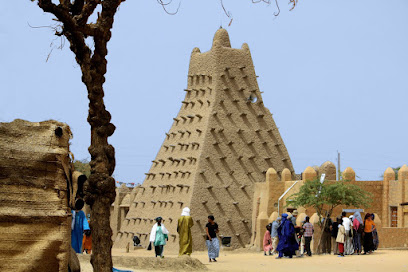
Sankore Mosquee
0.7 km
Discover the legacy of the Sankore Mosque, a historic center of Islamic learning in the heart of Timbuktu.
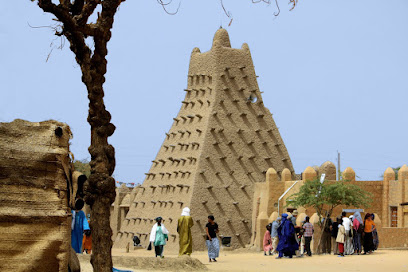
Timbuktu Mali
1.0 km
Explore Timbuktu, Mali: Uncover the history of this ancient city, a legendary center of trade and Islamic scholarship in West Africa.
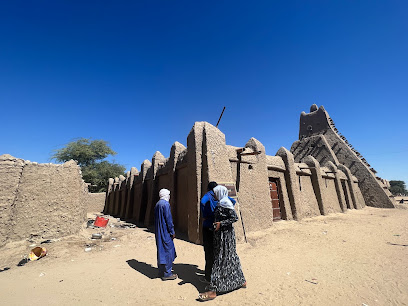
TIMBUKTU II
1.4 km
Stay fit in Timbuktu at Timbuktu II, a welcoming gym with modern equipment and a vibrant community atmosphere perfect for travelers and locals alike.
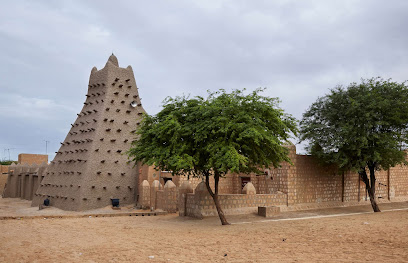
Monuments De La Paix
2.1 km
A peace monument in Timbuktu symbolizing the end of conflict and a commitment to reconciliation in a historically rich city.
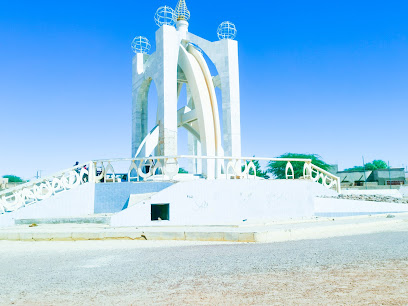
Unmissable attractions to see
Allimah Ben Essayouti
0.1 km
Explore the serene Allimah Ben Essayouti Park in Timbuktu, Mali—where nature meets culture in a peaceful oasis.

Sidi Yahiya Mosque
0.3 km
Explore the historic Sidi Yahiya Mosque in Timbuktu, a stunning example of Sudano-Sahelian architecture and a vital part of Mali's cultural heritage.
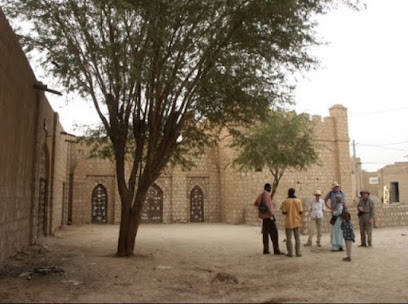
Ethnological Museum Timbuktu
0.5 km
Explore the rich cultural heritage of Timbuktu at the Ethnological Museum, a hub of history showcasing artifacts and manuscripts from a legendary past.
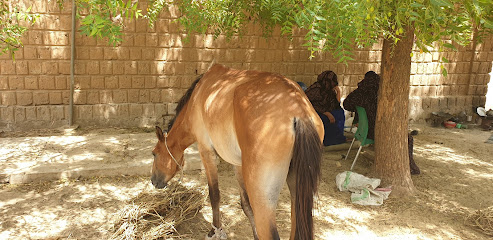
Ahmed Baba Institute
0.7 km
Explore the Ahmed Baba Institute in Timbuktu, where centuries of African scholarship and culture come alive through ancient manuscripts and rich history.
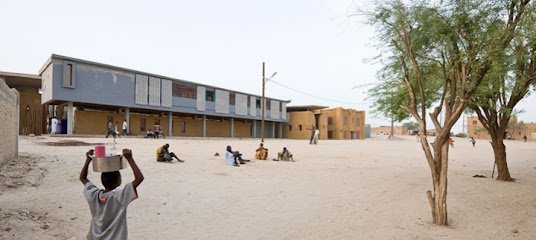
Martyrs de l'indépendance
0.7 km
Discover the serenity and historical significance of Martyrs de l'indépendance, a park dedicated to Mali's heroes in the heart of Timbuktu.

Site Sidi Naji
1.0 km
Explore the serene beauty of Site Sidi Naji, a lush garden in Timbuktu that offers a tranquil escape amidst the city's rich history.

تيمبكتوا جمهورية مالي
1.0 km
Discover the enchanting Timbuktu, a UNESCO World Heritage Site known for its rich history, unique architecture, and vibrant cultural heritage in the heart of Mali.

Mission Culturelle de Tombouctou
1.0 km
Explore the Mission Culturelle de Tombouctou, a vital heritage site preserving the rich cultural history of Timbuktu and its ancient wisdom.
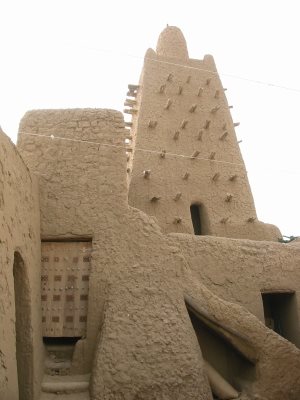
هندوhandaw
21.3 km
Explore the historical wonders of Timbuktu at Hindouhandaw, a key attraction that embodies the rich heritage of this ancient city.

Essential places to dine
Salam Restaurant
0.4 km
Discover authentic African cuisine at Salam Restaurant in Timbuktu – where every dish tells a story!
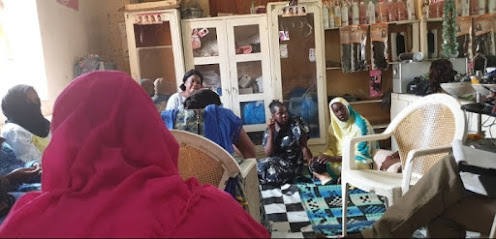
Al Hayat Restaurant
0.5 km
Discover authentic Malian flavors at Al Hayat Restaurant in Timbuktu – where tradition meets taste.

Restaurant Favela
0.6 km
Experience the authentic flavors of Timbuktu at Restaurant Favela - where every dish tells a story.

Pâtisserie Aco
0.6 km
Discover the flavors of Timbuktu at Pâtisserie Aco - where exquisite pastries meet local culinary traditions.
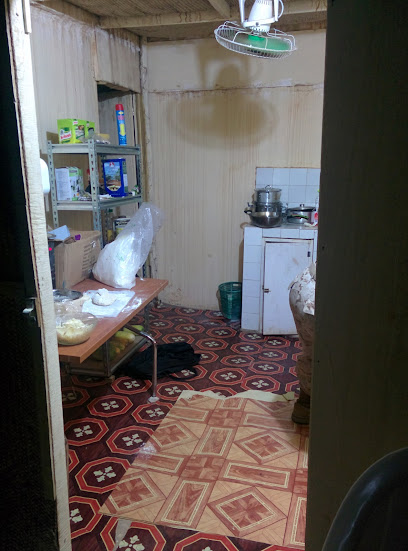
Hôtel du Désert
0.7 km
Experience comfort and culture at Hôtel du Désert - your gateway to exploring historic Timbuktu.

Poulet d'Or Restaurant
0.7 km
Experience authentic Malian flavors at Poulet d'Or Restaurant in Timbuktu – where tradition meets taste.

Lungo A+M Timbuktu Papa‘s HühnerTag
1.0 km
Experience authentic Malian flavors at Lungo A+M Timbuktu Papa‘s HühnerTag, where tradition meets community in a cozy soup kitchen setting.

Amanar Restaurant
1.1 km
Discover authentic Malian cuisine at Amanar Restaurant in Timbuktu – where tradition meets flavor in a cozy setting.
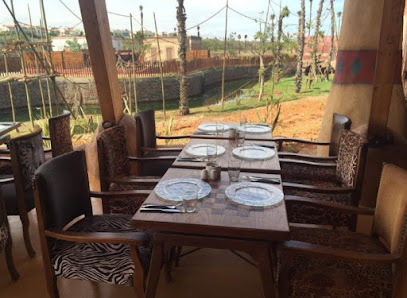
Hendrina Khan
1.1 km
Experience unmatched comfort and hospitality at Hendrina Khan while exploring the rich history of Timbuktu.

Restaurant
1.3 km
Discover authentic Malian cuisine in Timbuktu's vibrant restaurant scene, offering traditional dishes with local flair in a welcoming atmosphere.
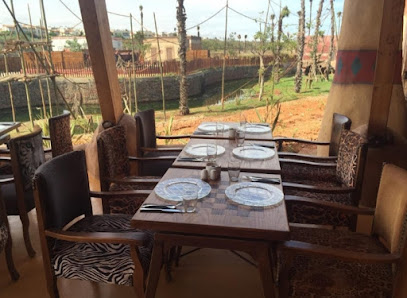
Markets, malls and hidden boutiques
Boulangerie GDF
0.3 km
Savor the essence of Timbuktu at Boulangerie GDF, where traditional baking meets local flavors in every delicious bite.

حساني حم
0.3 km
Discover حساني حم, a charming general store in Timbuktu offering local crafts, snacks, and a glimpse into the vibrant culture.

Istanbul pour Les parfums et le commerce General
0.4 km
Explore the vibrant shopping experience at Istanbul pour Les Parfums et le Commerce General in Timbuktu, where tradition meets modernity.
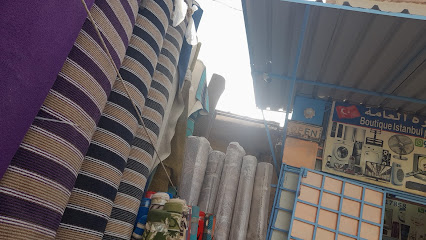
DOUCOURE ET FRERES
0.4 km
Explore the authentic flavors of Mali at Doucouree et Freres, your local grocery store in Timbuktu offering traditional products and unique finds.

متجر السالك
0.4 km
Explore the unique flavors of Timbuktu at متجر السالك, a grocery store offering local ingredients and cultural treasures.

يُوبُ بىرْ
0.4 km
Experience the vibrant shopping scene at يُوبُ бирْ in Timbuktu, where tradition meets modernity in a lively cultural hub.

Boutigue Ahmed tijani
0.4 km
Explore Boutique Ahmed Tijani in Timbuktu for an authentic taste of Malian culture with local groceries and unique delicacies.

Kome couture
0.4 km
Discover the heart of Timbuktu's textile culture at Kome Couture, a sewing shop offering unique fabrics and craftsmanship.

Petit Market
0.5 km
Explore the vibrant Petit Market in Timbuktu, where local culture, crafts, and authentic Malian cuisine come together in a lively atmosphere.

QATAR boutique حساني حم
0.5 km
Discover the essence of Malian style at QATAR Boutique, a unique clothing store in Timbuktu offering handcrafted fashion and accessories.

Salek Boutique
0.5 km
Explore the vibrant local culture at Salek Boutique in Timbuktu, where traditional flavors and artisanal crafts come together.

Le Souvenir
0.5 km
Discover the essence of Malian cuisine at Le Souvenir, a must-visit restaurant in the historic Timbuktu, where flavors and culture unite.

ولدأحمدسالم لعيشي
0.5 km
Discover the essence of Malian fashion at ولدأحمدسالم لعيشي, a unique clothing store in the heart of Timbuktu, blending tradition with modern style.
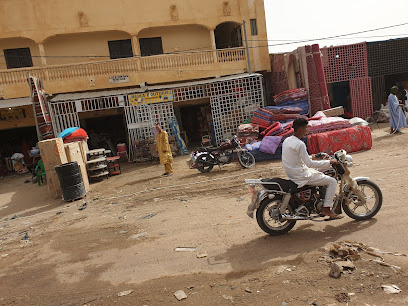
عبد الله حميدا
0.6 km
Discover the vibrant fashion of Timbuktu at Abdullah Hamida, where local craftsmanship meets authentic style.

Ubiya Boutique
0.6 km
Ubiya Boutique in Timbuktu: Embrace local culture through unique shopping experiences and handcrafted treasures.

Essential bars & hidden hideouts
Pharmacie Officine Jour et Nuit
0.4 km
Explore Timbuktu with confidence - your health is in good hands at Pharmacie Officine Jour et Nuit, a 24/7 pharmacy catering to all your wellness needs.

Alaykum Shishabar
0.4 km
Discover the vibrant atmosphere and rich culture of Timbuktu at Alaykum Shishabar, the perfect bar for relaxation and connection.

Restaurant Pâtisserie chez Hamel
0.7 km
Discover the culinary delights of Timbuktu at Restaurant Pâtisserie chez Hamel, where gourmet hamburgers meet local flavors in a cozy setting.
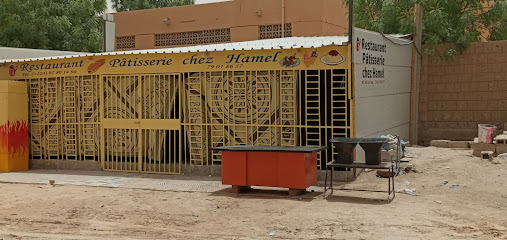
ߕߐߡߓߐߞߎߕߎ
1.0 km
Discover the rich culinary heritage of Timbuktu at this vibrant restaurant, offering a unique blend of local and international flavors in an inviting atmosphere.

Hôtel handrina khan
1.0 km
Discover the charm of Timbuktu with family-friendly stays at Hôtel Handrina Khan, your gateway to cultural exploration and comfort.

Amel Restaurant
1.8 km
Discover the culinary delights of Timbuktu at Amel Restaurant, where authentic Malian flavors come alive in a warm and inviting atmosphere.

U scemuitoni
42.1 km
Experience vibrant nightlife at U Scemuitoni, Milala’s top bar for local drinks and lively atmosphere, perfect for tourists and locals alike.




